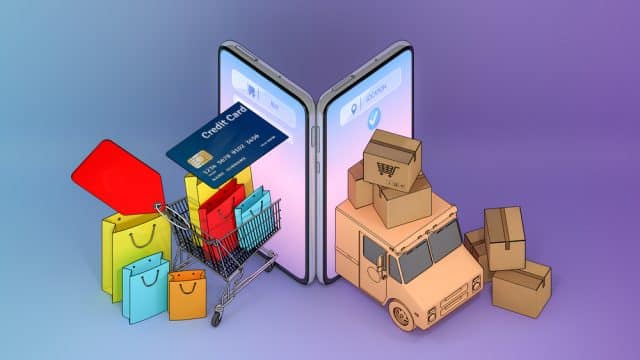Cyberattacks, standards and the 'door dash' -- eCommerce predictions for 2023

The past couple of years have seen a boom in eCommerce as more people have worked -- and shopped -- from home.
But as the industry's profile has grown so has the risk of cyberattacks. What’s also been thrown into sharp focus is that delivery systems sometimes don't live up to the buying experience. So how will the eCommerce sector address these things in 2023? Here's what some industry experts think.
Benjamin Fabre, co-founder and CEO of DataDome, thinks eCommerce will remain in the front line for cyberattacks. "While every industry is at risk of online fraud and bot attacks, eCommerce stands out. There's a lot of money for businesses in eCommerce, particularly when it comes to highly anticipated products or sales events, and that means a lot of money bots can steal -- especially when you consider that some of the most sophisticated bots, like sneaker bots, are designed to purchase goods en masse at launch to later resell. These bots, and others, are becoming cheaper and easily available to the general population: bots as a service."
Bala Kumar, Jumio CPO, echoes this view. "Financial fraud came in at number four on INTERPOL's 2022 list, though in 2023, it would not be a surprise to see this category top the charts. Cybercrime and financial crime go hand-in-hand with so many fraudulent financial activities enabled by increasingly sophisticated AI and other digital technology. With the proliferation of financial crime-as-a-service in the contemporary business landscape through email compromise, CEO fraud and eCommerce scams, we can expect to see this threat to remain front and center in the year ahead."
CISO at digital commerce platform VTEX, Rodrigo Jorge, thinks businesses need to consider the metaverse in planning their eCommerce security strategies. "The number of hackers are bound to increase and they'll be ready to pounce on any company preoccupied with their metaverse strategy. Sure, the metaverse is growing in popularity, but most people still don't know how to make safe transactions online. That's important to note because standard digital commerce (not including the metaverse) will still remain more popular and companies need to prioritize their digital commerce strategy first -- or they'll pay the price."
Changing privacy standards will affect the way eCommerce businesses handle data, says Alessandro Chimera, director, digitalization strategy at TIBCO. "Currently, Europe's GAIA-X cloud project is looking to challenge the cloud hegemonic powers of the United States and China. Europe feels that cloud providers located in the United States and China process sensitive data like electronic patient records and private eCommerce transaction data from their customers with minimal concern to the privacy of the people whose data is being processed. This will cause a ripple effect in the United States, as organizations looking to do business in Europe who want access to the data being shared in GAIA-X will have to adopt policies that conform to Europe’s more stringent privacy standards."
Consumers will turn increasingly to social media to interact with brands, says Emplifi CMO, Zarnaz Arlia. "Social customer care has always been in the shadows, but with lockdowns and travel restrictions the invisible cloak was removed. Brands quickly realized that they weren't equipped to manage customer support efforts via their social platforms without reconsidering their social care capabilities. This trend isn't going anywhere anytime soon. We will increasingly see customers turning to social media platforms more frequently to connect with brands about service-related issues."
Kashyap Deorah, co-founder and CEO of HyperTrack believes delivery services will have to change to keep up with improved buying experiences. "The major eCommerce players have put a lot of effort into streamlining the customer buying experience, but the delivery process leaves a lot to be desired. We typically know the day our package has been shipped and when we should receive it; we even have a range of estimated time for the actual delivery -- but not yet the exact time. Consumers want to know when their driver is 15 minutes away, five minutes away, and when they are at your doorstep in order to be ready and prepared to accept the package. The 'DoorDash' experience is missing from most eCommerce sites in terms of last mile delivery fulfillment, but this is going to change. Early 2023 -- after the present holiday shopping cycle ends is when I predict companies will pour more resources into logistics technology that illuminate the last mile delivery, offering previously unseen delivery time transparency for consumers. This will occur due to both consumer demand and eCommerce competition -- the battleground between rival platforms will move from the buying experience to pinpointing Last Mile Delivery."
Image credit: [email protected]/depositphotos.com
